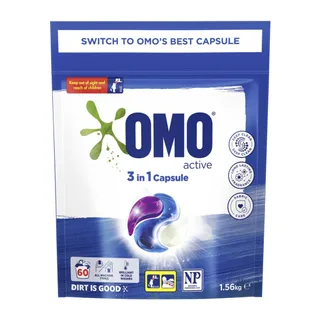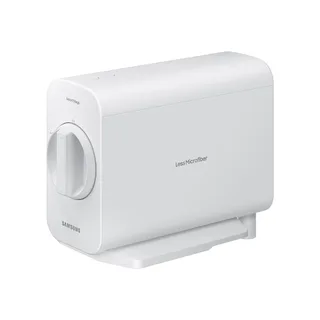Years of experience have taught me that when it comes to doing the laundry, good things take time. It takes time to pre-treat stains, to sort the laundry into piles and to soak anything that needs a bit of extra attention. I find the thought of a long, leisurely wash cycle comforting and necessary. But that doesn’t mean I haven’t found the ‘quick wash’ option tempting, if a bit mysterious.
Here’s what goes through my mind when I’m weighing up whether to go rogue and select quick wash. Can I trust you? How do you wash things so quickly? Can a 15-minute spin in cold water really clean my clothes properly? Can you handle a full load? Surely this is too good to be true. Oh and do I use the same amount of detergent?
In the end, I usually only reserve the time-saving function for moments when I desperately need a specific item of clothing on short notice (brand-new clothing and sports uniforms are frequent quick wash flyers). But could the ‘quick wash’ cycle be the answer to powering through load after load in the shortest possible amount of time? I spoke to Matthew Jaber, AEG category manager, care and wellbeing ANZ, as well as Omo Australia spokesperson, Alexia Wan, to find out.

What is a ‘quick wash’?
Most full washing machine cycles take anywhere from 50 minutes to over two hours to complete. A quick wash, on the other hand, is quick, needing only 15 minutes to an hour to complete depending on the machine.
Does the quick wash cycle really clean clothes?
The experts are unanimous, yes, a quick wash really can clean clothes properly as long as you meet a few basic criteria. “It’s effectiveness depends on the level of soiling, the type of fabric, the detergent used and the washing machine itself,” says Alexia. The amount of clothing you put into the cycle can also affect whether the cycle cleans your clothing properly or not.

How many pieces of clothing can you put in a quick wash?
Which brings us to the next question, just how much can you fit into a quick wash cycle? Matthew says speed cycles on most washing machines can clean up to 1-2kg of laundry effectively. “The quick wash setting has a shorter rinse time and is programmed for light loads of laundry that are easy to wash and only lightly soiled. So if you wash a full load on ‘quick wash’ it will lead to clothes not being cleaned properly,” he says. Some washing machines, including AEG’s range, can handle up to 3kg of clothing on a quick wash.
The pros of a quick wash
- According to Choice, most people only fill their washing machine with about 2-4kg of laundry at a time. So if you tend to only do small loads of washing daily, then it’s actually theoretically possible to clean them effectively using just the quick wash function.
- You’ll save time. Yes, the biggest pro of using the quick cycle is that it takes less time to complete. The quicker it’s washed the quicker you can dry and wear it!
- It can save water and energy. “Quick washes use less energy and water compared to longer cycles due to the length of time but also because quick washes use a lower water temperature which cuts down on energy,” says Matthew.
- It’s great for laundering delicate and lightly soiled items of clothing. “Quick wash cycles are gentler on clothing compared to longer cycles, which can be beneficial for extending the lifespan of your garments,” says Alexia.

5 mistakes you’re making when using the quick wash cycle
1. Overloading the machine
“Putting too many items into your washing machine can hinder the effectiveness of a quick wash cycle,” says Matthew. “Because it uses less water and time, its capacity is a lot smaller than a regular cycle.”
2. Using it for heavily soiled clothing
“Quick wash cycles are designed for lightly soiled items or items that need a quick refresh,” says Matthew. So if you’re trying to wash kids’ muddy clothing, or grease-stained workwear, you may not be thrilled with the results of a quick wash.
“Heavily soiled items require a longer, more intensive clean,” says Alexia.
3. Putting bulky items in
Bulky items such as heavy blankets, oversized jumpers and puffer jackets aren’t really designed for quick wash cycles, says Matthew. That’s because the spin time on quick wash cycles is reduced, meaning bulky items will retain more moisture once the cycle has completed. You can remedy this, however, by running an additional spin cycle once the quick wash is complete.
4. Using the wrong detergent
Because the quick wash setting is designed for smaller loads and most likely uses cold water, it’s best to reduce the amount of detergent you use and select a detergent that is effective in cold water.
“Using the wrong detergent or using too much detergent can lead to excess suds or poor rinsing, leaving residue on clothing,” says Alexia. “Try using less and see the results.” Alexia swears by Omo’s 3-in-1 capsules which contain a pre-measured dose of detergent that will effectively clean clothing even on a cold, short cycle.
5. Not using it often enough
The next time you’re putting on a load of washing, get curious as to how much that pile really weighs. Put a washing basket on a set of scales and fill it with washing. If it’s only about 2-3kg of lightly soiled clothing, select the quick wash option and see how you feel about the results. Doing so could save you time, money and power.
If you do use quick wash frequently, be aware that regular use of low-temperature quick cycles can lead to musty odours in the machine. To prevent this from happening, clean your washing machine regularly.
Choice observes that over the past 10 years, front loader washing machine cycle lengths have increased. Ten years ago, for example, the average front loader cycle ran for 99 minutes. Today, the average front loader cycle lasts for about 143 minutes. Why the increase? Well today’s machines use less water, which means it takes more time to wash the clothes effectively. Many modern washing machines also use sensor technology that adapts the amount of water and the length of the cycle according to the soil level and weight of the contents.
Did you know? Wash cycles are getting longer
The downsides of a quick wash
While on the surface, a quick wash can save time, water and energy, it’s important to talk about other ways laundry day could be affecting the planet. Because quick washes aren’t technically a ‘full load’, it could lead to clothing releasing more microplastic fibres than they would in a full load on a regular cycle.
According to The Conversation, laundry is one of the top sources of microplastics pollution. To reduce the amount of microfibres released by your laundry, Professor Emerita of Biological Sciences of Rutgers University, Judith Weis, suggests:
- Wash full loads where possible
- Use cold water
- Use less detergent
- Invest in a front loader washing machine
- Hang clothes to dry, rather than using a clothes dryer
To combat the issue, Samsung recently released a Less Microfibre Filter, which can be connected to select Samsung machines to capture up to 98% of the plastic microfibres released during a standard wash cycle.
 (Credit: Photography: Simon Whitbread / Styling: Jamee Deaves)
(Credit: Photography: Simon Whitbread / Styling: Jamee Deaves)













